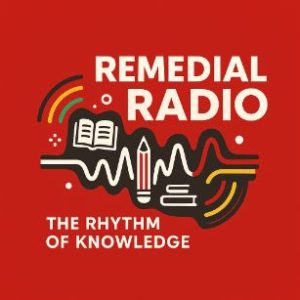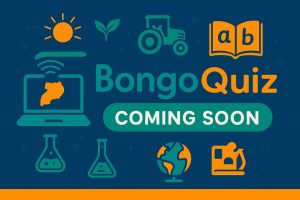Mining is a key economic sector in East Africa, contributing to exports, employment, and industrial development. However, behind every gleaming mineral lie complex factors that shape the success and sustainability of the industry. In this blog post, we explore key aspects such as:
- The market for minerals.
- Government policies and the role of technology in mining.
- Types of mining: open-cast and underground methods.
- Environmental impacts of mining.
- Challenges in oil extraction and land ownership.
- Benefits and drawbacks of mining for local communities.
Contents
- 1 🏪 1. The Market for Minerals in East Africa
- 2 🏛️ 2. Government Policies and Technology in Mining
- 3 ⛏️ 3. Types of Mining: Open Cast vs. Underground
- 4 🌿 4. Environmental Impacts of Mining
- 5 🛢️ 5. Challenges in Oil Extraction and Land Ownership
- 6 🏘️ 6. Benefits and Drawbacks of Mining for Local Communities
- 7 ✅ Summary Table
🏪 1. The Market for Minerals in East Africa
East African minerals such as gold, diamonds, copper, cobalt, and tanzanite have strong demand in global markets.
a) Export Market
- Most East African countries export raw or semi-processed minerals to international buyers.
- Key buyers include China, India, United Arab Emirates, South Africa, and Europe.
- For example, Rwanda exports coltan and tin; Tanzania is a major gold exporter.
b) Local Market
- There is growing demand for minerals like limestone and gypsum in the local construction industry.
- However, most precious minerals are exported due to limited local refining capacity.
c) Value Addition and Market Expansion
- Governments are pushing for local beneficiation, meaning minerals should be processed locally before export.
- This strategy helps increase value and creates jobs in refining and manufacturing.
🏛️ 2. Government Policies and Technology in Mining
a) Government Regulations
- Mining is regulated through laws, licenses, and environmental standards.
- Governments issue mining rights and require Environmental Impact Assessments (EIAs).
- For example, Uganda’s Mining and Minerals Act, 2022, seeks to attract investment while protecting communities and the environment.
b) Taxation and Royalties
- Governments collect royalties and taxes from mining firms, which support public services.
- Some countries offer tax incentives to attract foreign investors.
c) Technology in Mining
Modern technology has improved efficiency and safety:
- Remote sensing for mineral exploration.
- Geological mapping and GPS-based surveys.
- Automated drilling and conveyor belts.
- Use of AI and drones in environmental monitoring and safety checks.
However, many local artisanal miners lack access to such technologies, leading to lower productivity.
⛏️ 3. Types of Mining: Open Cast vs. Underground
a) Open Cast Mining
Also called surface mining, this involves digging a large pit to extract minerals near the surface.
Examples:
- Limestone mining in Hima (Uganda)
- Gold mining in Geita (Tanzania)
Advantages:
- Cheaper and safer.
- Easier access to minerals.
Disadvantages:
- Destroys vegetation.
- Causes dust and noise pollution.
b) Underground Mining
Used for deep-seated minerals like copper or salt.
Examples:
- Kilembe copper mines in Uganda.
- Some gold mines in western Kenya.
Advantages:
- Less surface disruption.
- Can reach deeper minerals.
Disadvantages:
- Expensive.
- Dangerous due to cave-ins and gas exposure.
🌿 4. Environmental Impacts of Mining
Mining, while economically beneficial, poses serious environmental threats if not properly managed.
a) Deforestation
- Forests are cleared to access minerals.
- This threatens biodiversity and disrupts ecosystems.
b) Soil and Water Pollution
- Chemicals used in gold processing, like mercury and cyanide, pollute rivers and underground water.
c) Air Pollution
- Dust from open-pit mining and harmful gases from machinery affect air quality.
d) Land Degradation
- Abandoned mines become dangerous pits and reduce land productivity.
Solutions:
- Proper mine closure and land reclamation.
- Use of eco-friendly mining technologies.
- Strict enforcement of environmental regulations.
🛢️ 5. Challenges in Oil Extraction and Land Ownership
Oil discovery in Uganda’s Albertine Graben and Kenya’s Turkana has brought hope, but also challenges.
a) Land Ownership Conflicts
- Oil-rich areas often overlap with indigenous lands.
- Displacement of communities and unfair compensation lead to tension.
b) Environmental Concerns
- Oil spills, gas flaring, and pipeline construction threaten natural habitats.
c) Delays in Infrastructure
- Lack of refineries, pipelines, and skilled labor slow down development.
d) Political and Legal Hurdles
- Disagreements between governments, investors, and local communities delay projects.
🏘️ 6. Benefits and Drawbacks of Mining for Local Communities
a) Benefits
- Job Creation
Mining offers employment to local youth, both skilled and unskilled. - Infrastructure Development
Mining firms often build roads, schools, and health centers as part of their CSR initiatives. - Local Business Growth
Increased population near mines boosts demand for food, housing, and services. - Royalties to Local Governments
In some countries, a percentage of mining royalties is shared with local districts.
b) Drawbacks
- Displacement and Land Grabbing
Communities are sometimes forcefully removed without proper compensation. - Environmental Degradation
Polluted rivers and degraded land reduce access to clean water and farming land. - Health Risks
Dust, noise, and hazardous chemicals cause respiratory and skin diseases. - Social Disruption
Mining towns may experience increased crime, prostitution, and substance abuse.
📌 Conclusion
Mining remains a double-edged sword in East Africa. While it brings economic development, job creation, and infrastructure, it also introduces environmental, health, and social challenges.
To ensure sustainable development, governments and investors must:
- Implement transparent policies and community consultation.
- Enforce strict environmental regulations.
- Invest in local processing and technology.
- Prioritize education and skills training for locals.
Mining can then truly benefit current and future generations across East Africa.
✅ Summary Table
| Topic | Key Points |
| Market for minerals | Exports, local demand, value addition |
| Government & tech | Licensing, environmental laws, modern mining tools |
| Mining types | Open cast (surface), Underground (deep), pros & cons |
| Environmental impacts | Deforestation, pollution, land degradation |
| Oil challenges | Land rights, environmental risks, delays |
| Community effects | Jobs and development vs displacement and pollution |


Leave a Reply